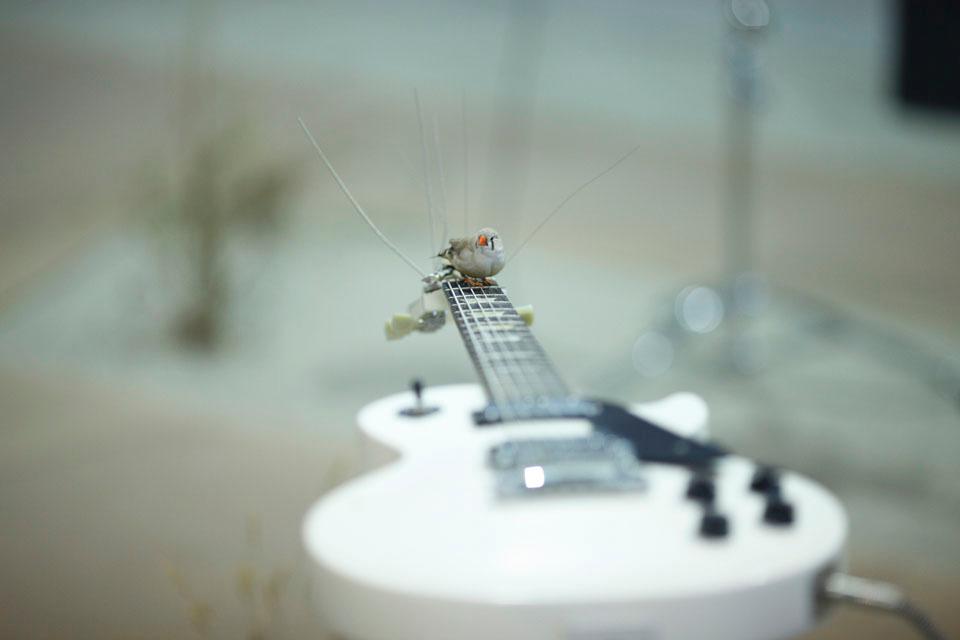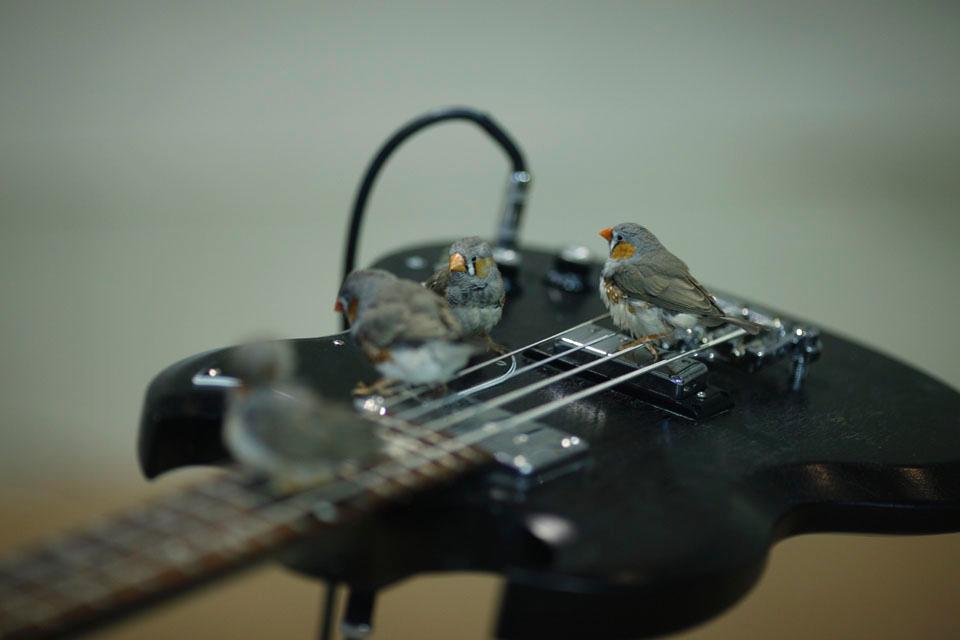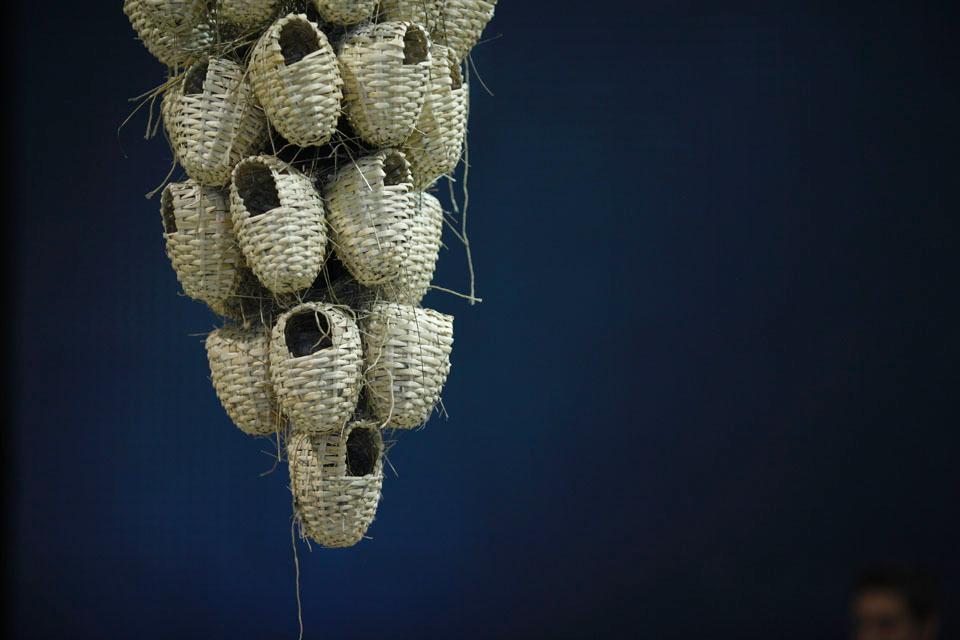The finches flutter and perch incessantly in this elegantly formalized stage set, hopping around and rubbing their beaks on the guitar strings. When they do this, the instrument generates a highly amplified sound. Some of the guitars are programmed to reverberate. The sonic result of this installation is that the space constantly echoes with residual, extemporaneous, unpredictable sound. The "concert" lasts throughout the day.
Viewers are an active part of the whole affair, even though they, unlike the finches, are not required to be there. Their very presence stimulates the birds to move and fly, and so to create new music.
The installation's creator, Céleste Boursier-Mougenot, is not new to this kind of operation. Academically trained as a musician and composer, for years Boursier-Mougenot has chosen to experiment in combining sound and vision. His work stems from a mix of concept, calculation and chance. "The objects must be left to speak," he says.
His research into music and the nature of sound suggests that there is musical potential to be explored everywhere; this leads him to orchestrate all kinds of situations and objects ranging from street life, whose sounds are treated and reprocessed, to trees stirred by the wind, from waving dishes that become percussion instruments to vacuum cleaners with built-in harmonicas. In all of these situations, sound is the result of improvisation that is, ironically, the result of a carefully prepared choice.

But above and beyond the musical considerations, with this installation the Cube (the space at HangarBicocca hosting the piece) becomes a crossroads where nature and culture—the realm of what is born and the realm of what is produced—interact in a complex relationship, giving shape to a hybrid visual and sonic landscape that is both organic and technological with sophisticated artifacts that come into contact with the body, those of the animals and by extension our own.

Gabi Scardi
In all of these situations, sound is the result of improvisation that is, ironically, the result of a carefully prepared choice.


